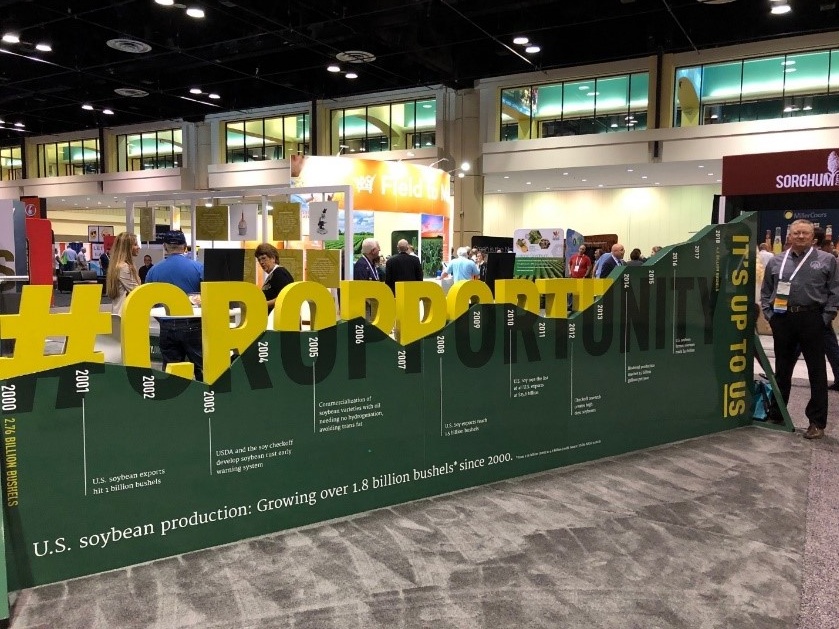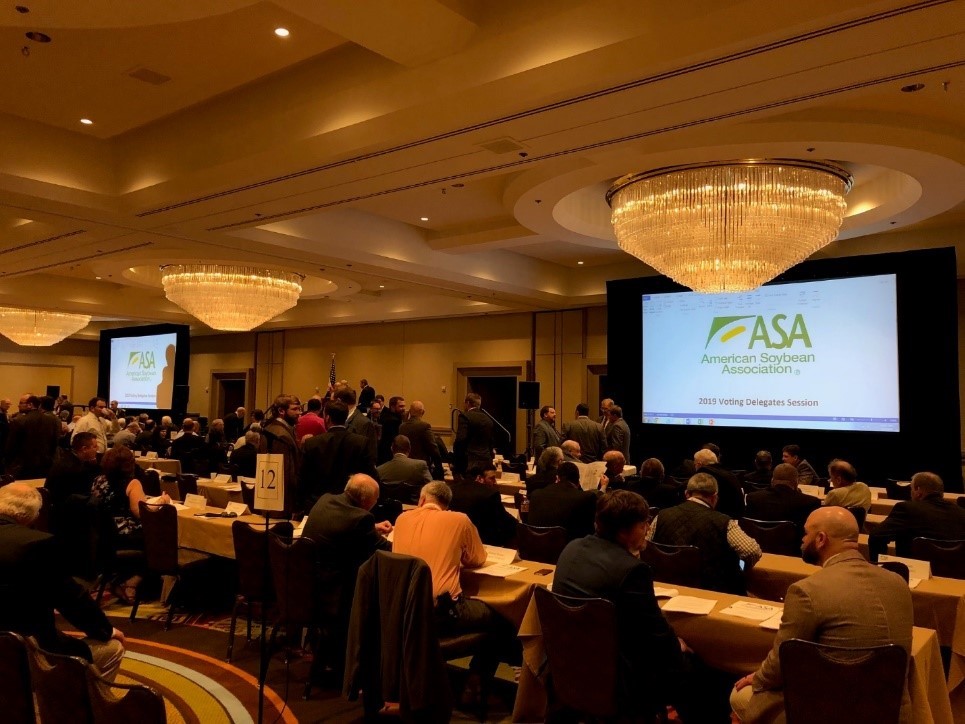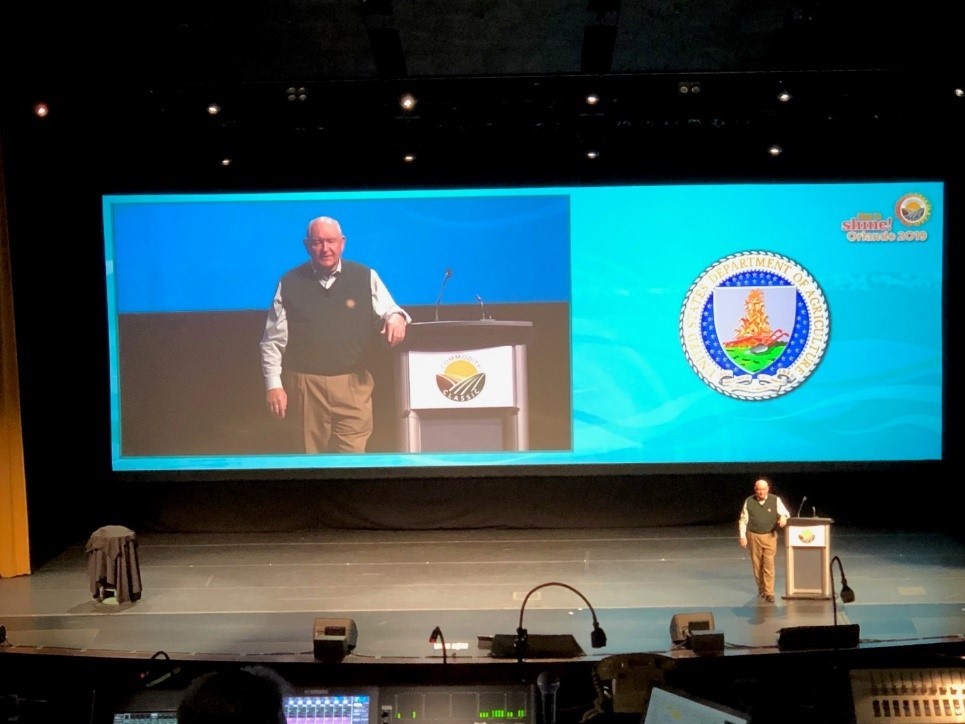Farm Life Journal - March 2019
March 13, 2019
By Tom Oswald
With March comes the end of winter meeting season. This is especially true for farmers who serve in state or national agricultural organizations. Seldom will there be a trip or meeting planned during planting or harvest season, but the winter months are fair game.
When I was president of the Iowa Soybean Association, there was “something” I needed to address each day and during meeting season it was common to be away from home one to five days a week. During that year, I gained an appreciation and empathy for those whose career demands being a road warrior or frequent flyer. I found the novelty of travel and hotels nights wears off quite quickly… at least I got fairly good at tying a tie!
Please note, by clicking the links you will be leaving a partially funded checkoff site.
I recently attended Commodity Classic in Orlando, Florida, which is a big trade show with numerous educational sessions, speakers and policy meetings. National commodity groups develop policy documents that guide their respective positions on legislation impacting those crops. Those documents are also a good way to see the values of the organizations.



Travel is nothing new to my wife and me because travel is our shared hobby. We enjoy seeing new places. It’s not hard to find maps, atlases or globes in our home. I’d say we prefer the outdoors versus large cities, but we have enjoyed visiting both.
As a farmer, seeing agriculture somewhere else in the world is the highlight of any trip. No matter the reason for the travel – whether on a mission to promote U.S. soybeans, learn about farming elsewhere, hike in the mountains, hang out on a beach, tour a big city or take in the sights – this quote from Mark Twain has impacted my mindset:
“Travel is fatal to prejudice, bigotry, and narrow-mindedness, and many of our people need it sorely on these accounts. Broad, wholesome, charitable views of men and things cannot be acquired by vegetating in one little corner of the earth all one's lifetime.” ― Mark Twain, The Innocents Abroad / Roughing It
My corner of the earth probably averages four people per square mile if you don’t count the small towns. Taking a 16-hour flight over land and ocean to deplane in a Chinese city of 14,000 people per square mile exposes travelers like me to a picture of just how big the world is. Travel has opened my eyes and has hopefully made me a better servant for ag organizations. We have a duty to share what we see, hear and learn with others. Observing city life where state or national meetings are held has an impact. It contributes to bigger, broader conversations about a farmer’s place in the world food supply.
In farming it’s easy to come down with a condition some call “backyarditis.” That is, it’s easy to think that what you see in your backyard is happening everywhere.
When needed rain isn’t falling on your farm, it’s hard to comprehend that your backyard might be the only area affected and accept the fact the crop is great elsewhere. Or, you might believe that nobody else has the same level of worries regarding their crop or livestock when, in fact, it might be worse for someone else. It’s tough to envision what it’s like to walk a mile in “John Brown’s shoes” when you live where you work.
My city family, personal and business travel experiences and observations make it easier to see why non-farmers might not understand what’s going on with the fields and farms, what things seldom change in agriculture, and what things are changing rapidly. Getting out and chatting with people in agriculture really helps both farmers and consumers understand each other.
If you told me 40 years ago when I was at the front end of my personal journey in agriculture that I’d someday consider myself in a “people” business, I’m sure I would have looked at you funny. Yet, that’s the exact viewpoint I have today.
In September 2017, as a member of the United Soybean Board active in the sustainability area, I was asked to address the World Soybean Research Conference to be held in Savannah, Georgia. The title of my presentation was “From the Ground Up, We are ALL Part of the Food Chain.” Though that conference was canceled due to the threat of Hurricane Irma, I was asked to address the annual soybean breeders’ workshop in St. Louis the following February.
My message to about 300 soybean researchers was that, as farmers, our most important customers are not soybean meal fed chickens, biodiesel fueled engines or sliced potatoes looking to be fried. Our only (or most important) customers are people. Chickens, engines or French fries don’t make decisions… people do. People make decisions all along the food chain.
And the food chain is not a linear or one-direction movement of products to humans. It’s also a conversation along the way that loops back to those at the ground level – the researchers who create products and information and the farmers who deploy those products of research to manage the crops that ultimately become part of the global food, fiber, biofuel and bioproduct supply.
That was my lightbulb moment.
I’d love to take credit for this bit of insight, but really it was an accumulation of conversations and observations I had experienced over the years serving on soybean-related boards. We talk about this stuff all the time. We realize that it’s not just about growing a crop. It’s bigger. It’s about value and the values of importance people share.
What was interesting for me as a participant in this workshop was how happy the researchers were to meet and visit with a farmer. You see, they too can get caught up in their own “backyard.” These researchers are some of the most brilliant scientists you’d ever want to meet. Together they converse in multi-syllable words that after a while gave a headache to my science-curious brain. As I scanned the audience while giving my presentation, I saw diversity of age, gender, ethnicity, cultural and educational experience, yet they were willing to listen to me, as someone using the products of their research, to gain a better perspective. Over lunch, you’d hear them visit about their families or hobbies outside their circle of research. They were really nice folks.
That’s when another lightbulb moment happened.
For those of us looking from the outside in at research organizations or companies, it’s easy to forget that they are made up of people. Around the globe there are thousands of people working to make the food supply better, safer and more sustainable. Those people, doing what to some might seem to be distant or unrelatable work because it is such deep science in a laboratory, are incredibly sincere and serious about the positive impact their work will have on the future. Their knowledge could easily have led them to human medicine instead of plant or crop research where they built their careers. These researchers too push a cart in a grocery store. They too care about their families. Bioscientists – and everyone along the food chain – are people, too. I think Mark Twain got it right.
In the next issue, we’ll start looking at getting a crop in the ground.
Til next month,
Tom